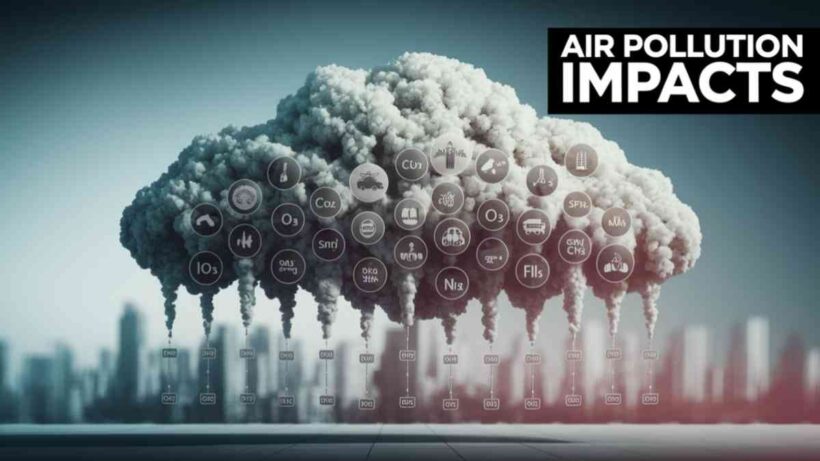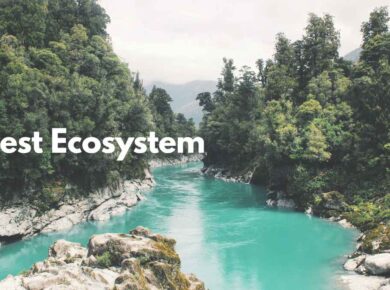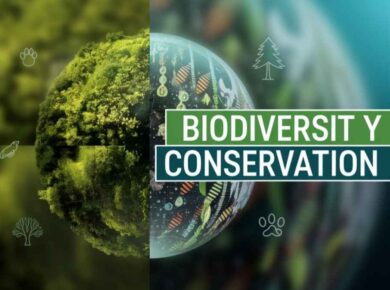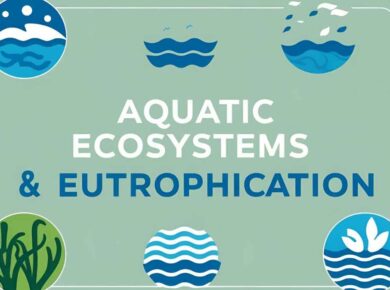Environment Pollution – Air Pollutants
Environmental Pollution
Pollution is the introduction of contaminants into the natural environment that cause adverse change. Pollution can take the form of chemical substances or energy, such as noise, heat or light.
Pollutants, the components of pollution, can be either foreign substances/energies or naturally occurring contaminants.
| Primary Pollutants | Persist in the form in which they are added to the environment for ex. DDT, Plastic |
| Secondary Pollutants | Formed by interaction among primary pollutants viz. PAN by interaction of NOx & Hydrocarbons |
| Biodegradable Pollutants | Waste products which are degraded by microbial action for ex. Sewage |
| Non-Biodegradable Pollutants | Not decomposed by microbial action for ex. Plastic, Glass, DDT, Radioactive substances |
| Quantitative Pollutants | Occur in nature & become pollutant when their concentration reaches beyond a threshold level for ex. CO2, NOx |
| Qualitative Pollutants | Do not occur in nature & are man-made for ex. fungicides, herbicides, DDT |
Major Air Pollutants |
|
| CO |
|
| CO2 |
|
| CFCs |
|
| Lead |
|
| O3 |
|
| SPM |
|
| SO2 |
|
| CH4 |
|
| Acid Rain |
|
| NOx |
|
| Classical Smog |
|
Ph value is a logarithmic index for hydrogen ion concentration in an aqueous solution, & each increasing Ph value diminish acidic nature of the solution by 1/10th.
| Photochemical Smog |
|
| GHGs |
|
| Formaldehyde |
|
| Radon |
|
Fly Ash
- Residue produced whenever combustion of solid material takes place, which rises with the gases in atmosphere & causes respiratory problems
- Contains Aluminium silicates, SiO2 & Calcium oxide (CaO) + Toxic metals like lead, arsenic, cobalt etc.
Advantages of Fly Ash
- Cement can be replaced by fly ash up to 35 % hence reducing cost of construction
- Fly ash bricks are lighter in weight & offer high strength & durability
- A better fill material for road embankments & concrete roads
- Can be used in reclamation of wasteland, can increase crop yield & enhances water holding capacity of land
Sources of Air Pollutant Emission: Industry > Transportation > Agriculture
Diseases By Air Pollutants
Yokkaichi asthma (SO2)
- Burning of petroleum and crude oil releases large quantities of sulfur oxides which causes severe smog
- Results in severe cases of chronic obstructive pulmonary disease, chronic bronchitis, pulmonary emphysema, and bronchial asthma
Pneumoconiosis / Black Lung Disease
- an occupational lung disease caused by inhalation of coal dust, often in mines
Asbestosis
- a lung disease, which leads to long-term breathing complications, caused by exposure to asbestos (No cure)
Silicosis
- a lung disease that is caused by inhaling tiny bits of silica mainly by the workers working in silica industries or sand blasting sites
Emphysema
- Breaking down of lung tissues due to air pollution & cigarette smoke leading to difficulty in expanding & contracting of lungs
For more updates, explore the Environment category. Feel free to share your thoughts and comments
If you’re passionate about building a successful blogging website, check out this helpful guide at Coding Tag – How to Start a Successful Blog. It offers practical steps and expert tips to kickstart your blogging journey!







